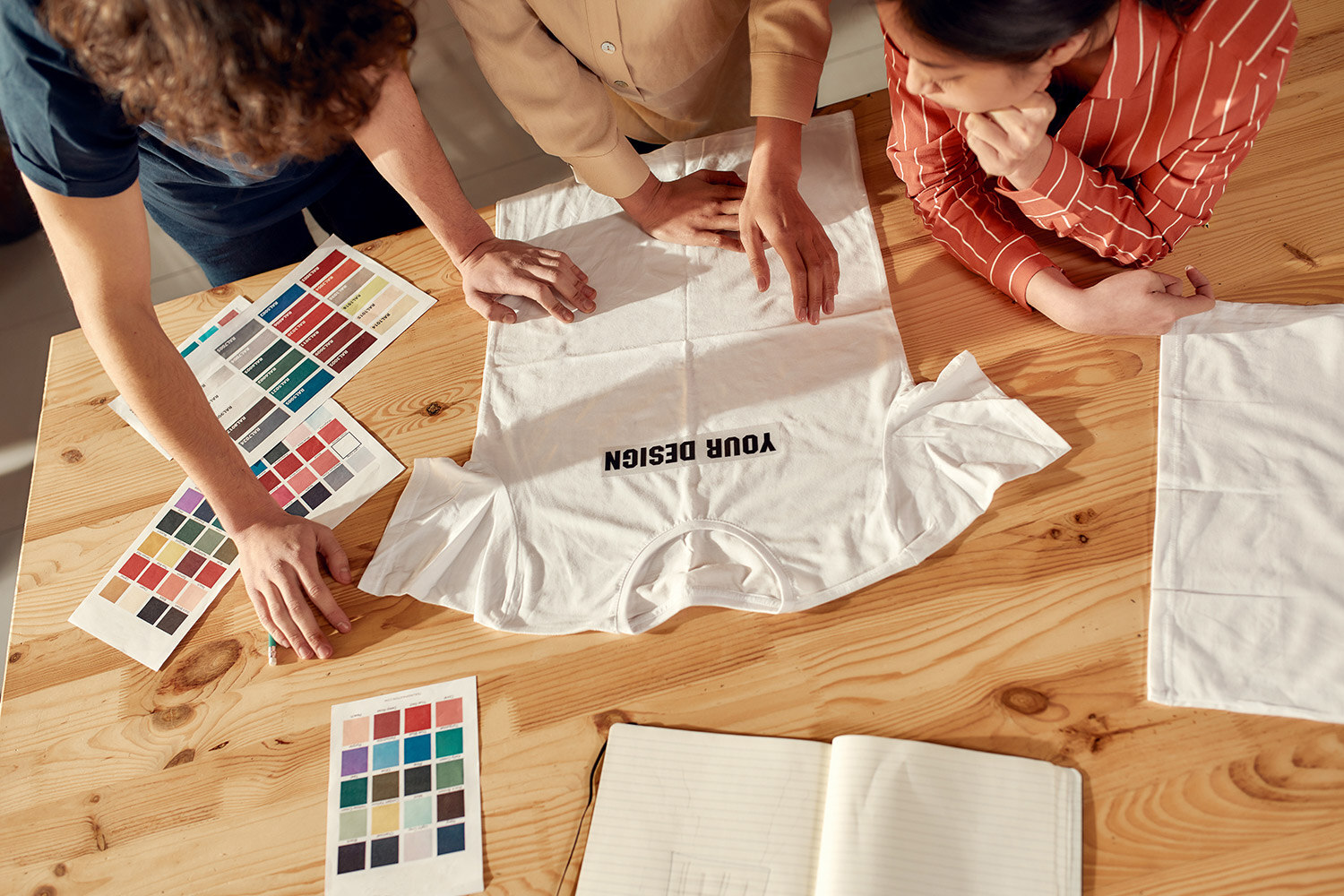01.17.2023 | Branding, Brand Awareness, Brand Refresh

If you have not yet thought about a brand refresh, now may be the time to do so! Changes can be subtle in any one given area, but as a whole, they can make a huge impression. You need to LOVE your brand. After all, it’s a client's first impression and you want to make it a good one. Each element needs to feel right and when it doesn’t, a few tweaks might need to happen.
Businesses are constantly evolving based on market trends, for those unfamiliar with the fantastic world of design, a brand refresh strategy is the way to go. A brand refresh is like a fresh coat of paint in terms of your visual branding and the voice of the brand. It may involve adjusting your color palette or logo, testing out a new font, updating your marketing materials, or updating your tagline.
The bottom line—great design adds value.
A brand refresh is essentially a makeover- a makeover that reflects your updated brand image. Whether you want to bring new energy into your company or plan on reaching new customers (while tending to your existing customer base,) a refresh is an excellent low-risk growth strategy.
How to successfully kickstart a brand refresh
Whether your online and offline branding doesn’t exactly align, your design is outdated, or your vision lacks clarity and growth has flatlined, the following steps will guide you as you embark on your brand refresh journey! Or a visual update if you will.
Step one: Complete a brand audit
It’s time to think about your brand's weaknesses and strengths. This is the “discovery” portion of your brand refresh journey. A brand audit will allow you to address and identify problematic areas. Maybe your brand has recently reached a stage that is starting to lose relevance, or you feel your customers aren’t as connected as they once were. Some areas to consider in your brand audit include:
-
Your main competitors — how have they changed recently?
-
Your website — What are you currently using your website for, what’s the purpose of the site and how does it look visually? Can a customer navigate your website with ease?
-
The strengths and weaknesses of your brand’s image. This may refer to your marketing materials, website, or even your event booth.
-
Current and future trends within your industry.
As you target various areas of your industry, business, and niche, remember to focus on a brand refresh strategy. Think of messaging and visual elements in terms of your brand's look tone and overall presentation.
Step two: Conduct research
Once you’ve recognized the “what” aspects of your strategy, you’ll want to focus on how you'll achieve your goals. Based on goals, x,y, and z, what steps do I need to take? Take this time to research services and tools that will help your efforts. Some questions to ask yourself are:
-
What does your marketing and sales time like and dislike about the current brand?
-
What about your designers?
-
What about your customers?
Based on your current brand, do you face execution challenges? For example, is it hard to use your current logo on a normal background because of its colors? The team at Slack changed their logo based on this reason!
It’s also important to think about the following:
-
Your brand’s personality
-
Your brand’s values
-
The brands you dislike and like -what could you learn from them?
-
What do you want to achieve with this new branding?
You also want to do research in regard to your competitors. What can you do to stand apart from the rest? Your competitive analysis may make you rethink your current digital and social presence, content marketing, key messages, style, logo, etc.
Step three: Alter your brand’s design
A distinctive visual identity is critical to your brand’s long-term success. While focusing on design elements, consider the following to convey the true essence of your brand:
-
Styles
-
Textures
-
Fonts
-
Logo
-
Color palette
As you are developing your new brand, it is important to create a design that shows the values and ideas of your brand. Leverage the research you did to help guide you before deciding on the overall scope of your rebrand.
How much money and time do you want to spend on your brand refresh? Do you just want to focus on updating your website? Or do you also need to redesign your product and marketing materials? Keep these questions in mind.
Next, break down and review each piece of your brand, including color, illustration style, photo style, page templates, and website page to answer the following questions:
-
Does it tell your story?
-
Does it communicate your business values?
-
Is liked or disliked?
-
Is it working for you?
-
Does it inspire your customers and clients?
Step four: Plan your brand refresh rollout
Now that you have figured out what pieces of the brand you want to change, it’s time to take action!
-
Create and update a brand book explaining how the newly refreshed brand works.
-
Introduce everyone in the company to the brand so they can get familiar with it.
-
Supply your employees with assets such as logo files, font files, etc.
-
Update PowerPoint slide templates and any other templates you might use.
-
Redesign major assets to fit into the new brand such as main website pages and any upcoming sales/marketing materials.
Depending on the budget that you have set, it is more than reasonable to pick and choose. To decide what you should update, please consider the following:
-
How often is an item seen?
-
How badly is the item out of compliance?
-
What parts of the new brand are okay to tweak and what must not be touched?
Note: you may not have the budget to update all visual assets – that’s okay! When deciding which ones to update, consider their overall visibility and the impact that making a small change will (or won’t) have on your overall brand. For example, an old logo on a redirect URL is likely less important to fix right away than, say, the logo on your latest landing page!
Step Five: Custom Merchandise
Generate excitement for your new brand with custom swag! Employees, customers, and clients can visualize your updated brand identity and get familiar with your new logo.
-
Merchandise branding relies on consistency. If your merchandise doesn’t have the same feel as your other branding properties, it won’t register as yours immediately.
-
Find out who your target audience is and determine what they will enjoy because the goal of branding merchandise is to provide something your target audience will find valuable.
-
To get you started, some popular items for custom merchandise are apparel, drinkware, and tech accessories.
These can all be great choices, especially if you’re new to merchandise branding. But think of them as a starting-off point, and not a complete list. The only limits of branding merchandise are what makes sense for your brand and fits your budget! Contact us today to see how we can help you with your custom merch!
Cheers to a new(er) you!
If you have followed these 5 steps and taken the time and effort necessary to pull off a brand refresh, great job! Remember that your brand isn’t a static identity, and you may need to tweak things based on feedback.
more ways to connect with stran
👐 Like these updates and insights? Subscribe to our blog.
⭐ Grab a free sample pack, and see how why better custom merch starts with Stran.
Elevate Your Branded Merch Strategy
